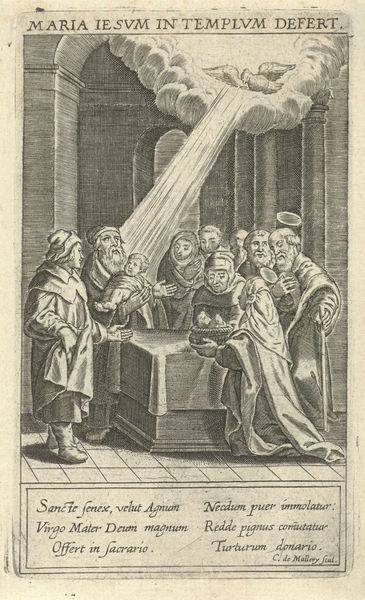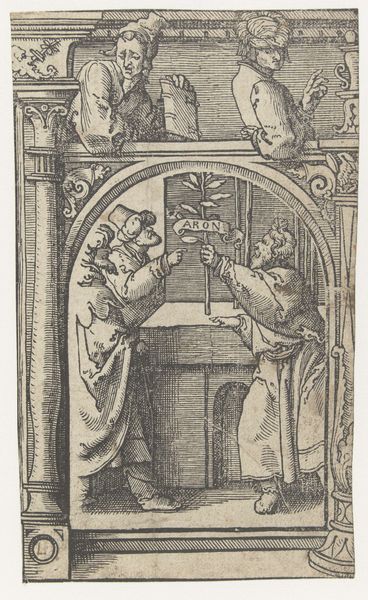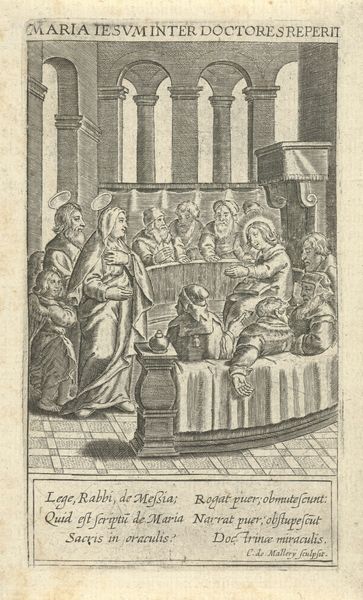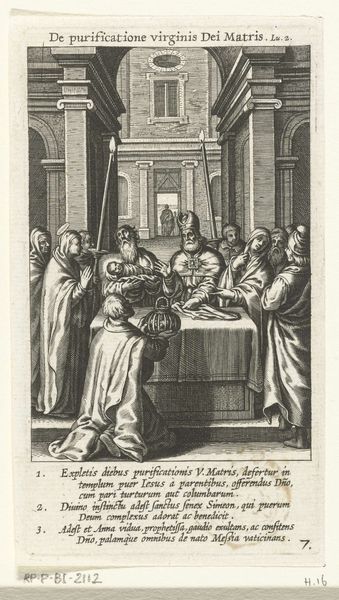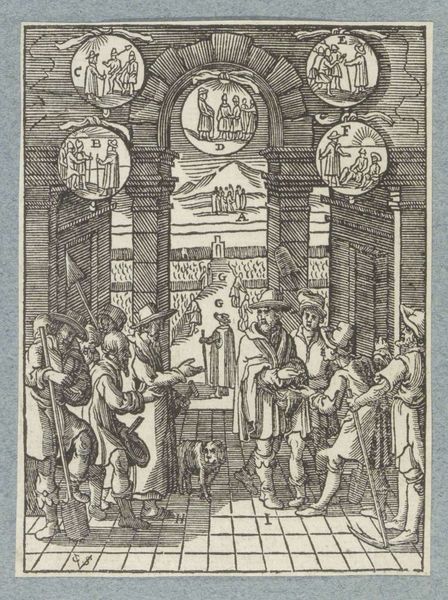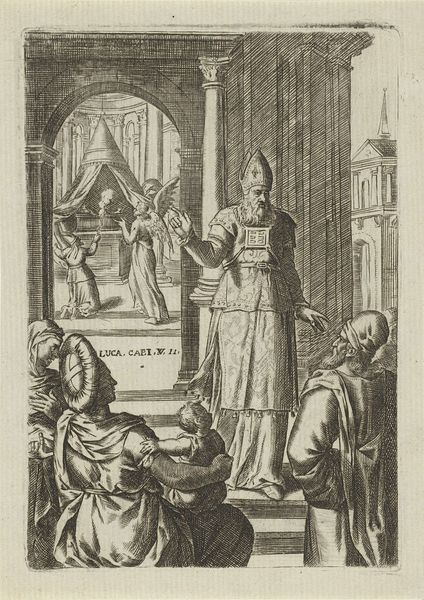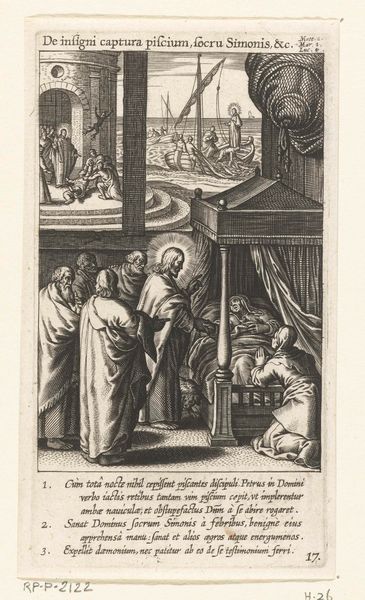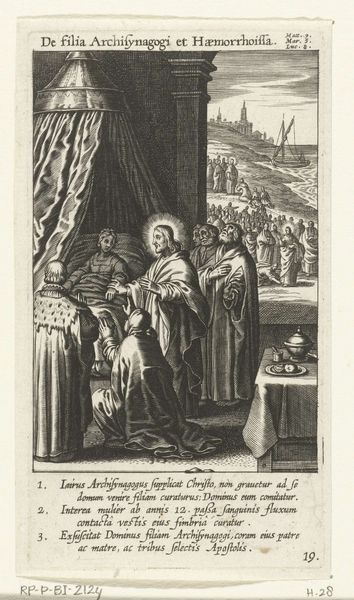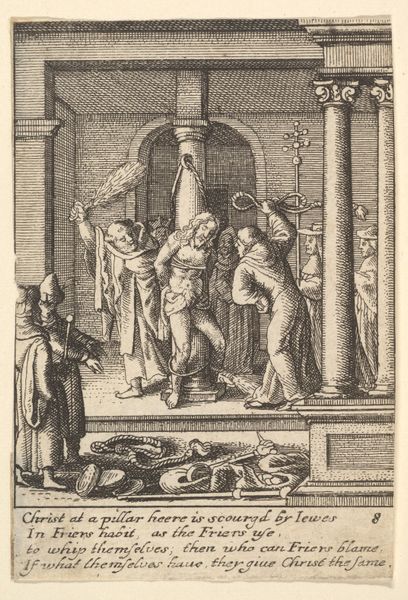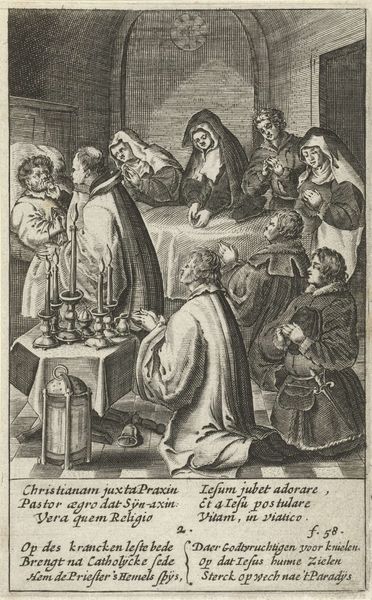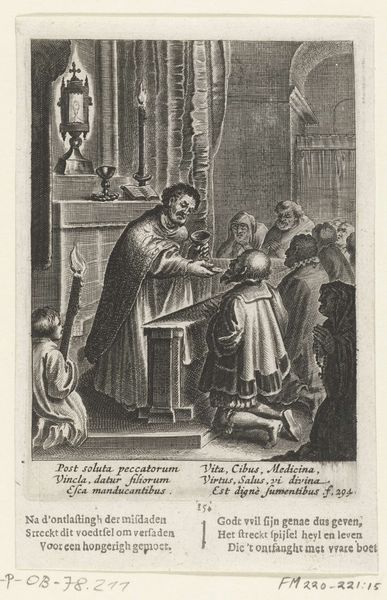
drawing, print, intaglio, paper, ink, engraving
#
drawing
#
narrative-art
#
baroque
# print
#
pen illustration
#
pen sketch
#
intaglio
#
paper
#
ink
#
pen-ink sketch
#
pen work
#
genre-painting
#
engraving
Dimensions: height 93 mm, width 50 mm
Copyright: Rijks Museum: Open Domain
Curator: This intaglio print is entitled "Sacrament van de stervende", or "Sacrament of the Dying Man", made in 1626 by Theodor Matham. It’s currently held in the collection of the Rijksmuseum. Editor: Immediately, the tight, vertical composition amplifies the emotional tension in the scene. The stark black-and-white heightens the gravity of the dying man’s final moments. It’s such a small picture but evokes enormous sympathy. Curator: Matham, active during the Dutch Baroque period, captures a scene of profound religious significance. The genre painting offers a glimpse into the spiritual rituals surrounding death and dying. It reflects the period’s preoccupation with salvation, damnation, and the sacraments. Editor: Absolutely. Considering the power dynamics at play in scenes like this is so vital; class and social status dictate not only how one lives but how one exits this world. The wealthy enjoyed rituals, prayers, and social presence to ease their crossing. This reminds us of death’s social inequalities. Curator: Note the attention to detail, especially the objects on the table like the ornate candles, vessels, and plates, all suggestive of wealth and perhaps status. We see people actively participating in what appears to be last rites, from kneeling family to the priest administering the sacrament. It captures the customs associated with this period and with preparing a soul for its final journey. Editor: Yes, and notice the lantern in the foreground and figure up the stairs, perhaps representing heaven or ascension. This image is so deeply symbolic. The drawing depicts the convergence of physical and spiritual worlds during death and underscores how the church and society provided elaborate structures for end-of-life experiences. The very public act of dying invites considerations around how certain bodies—based on religion, class, race, gender, ability—are perceived as worthy of such elaborate public displays of grieving. Curator: Viewing this work gives insights into not only the religious practices, but also the societal structures and expectations of the era. Editor: Agreed. Artworks like this push us to explore our beliefs surrounding dying and consider those that aren't always depicted in museums, whose stories go unacknowledged within our existing cultural institutions.
Comments
No comments
Be the first to comment and join the conversation on the ultimate creative platform.
